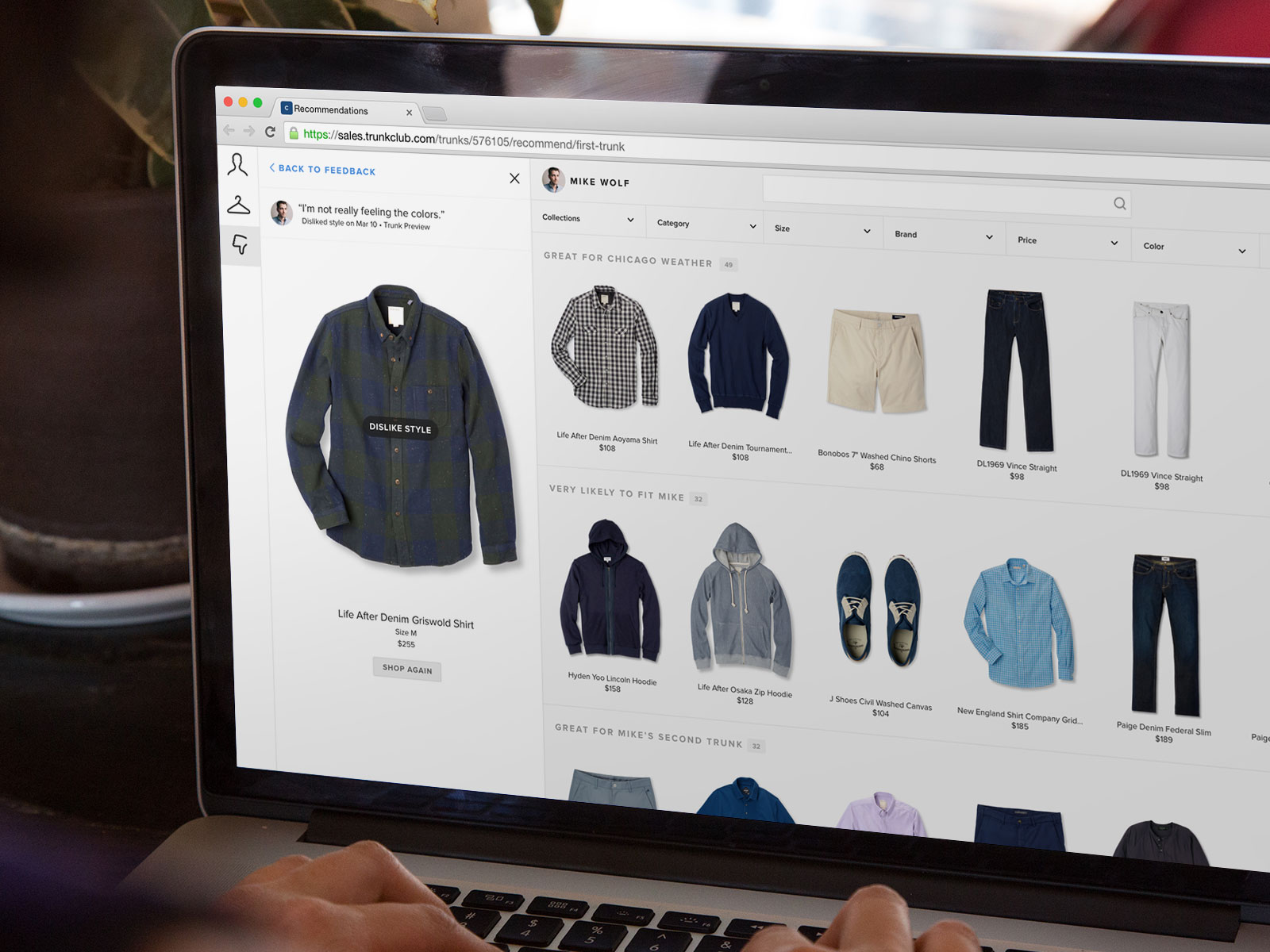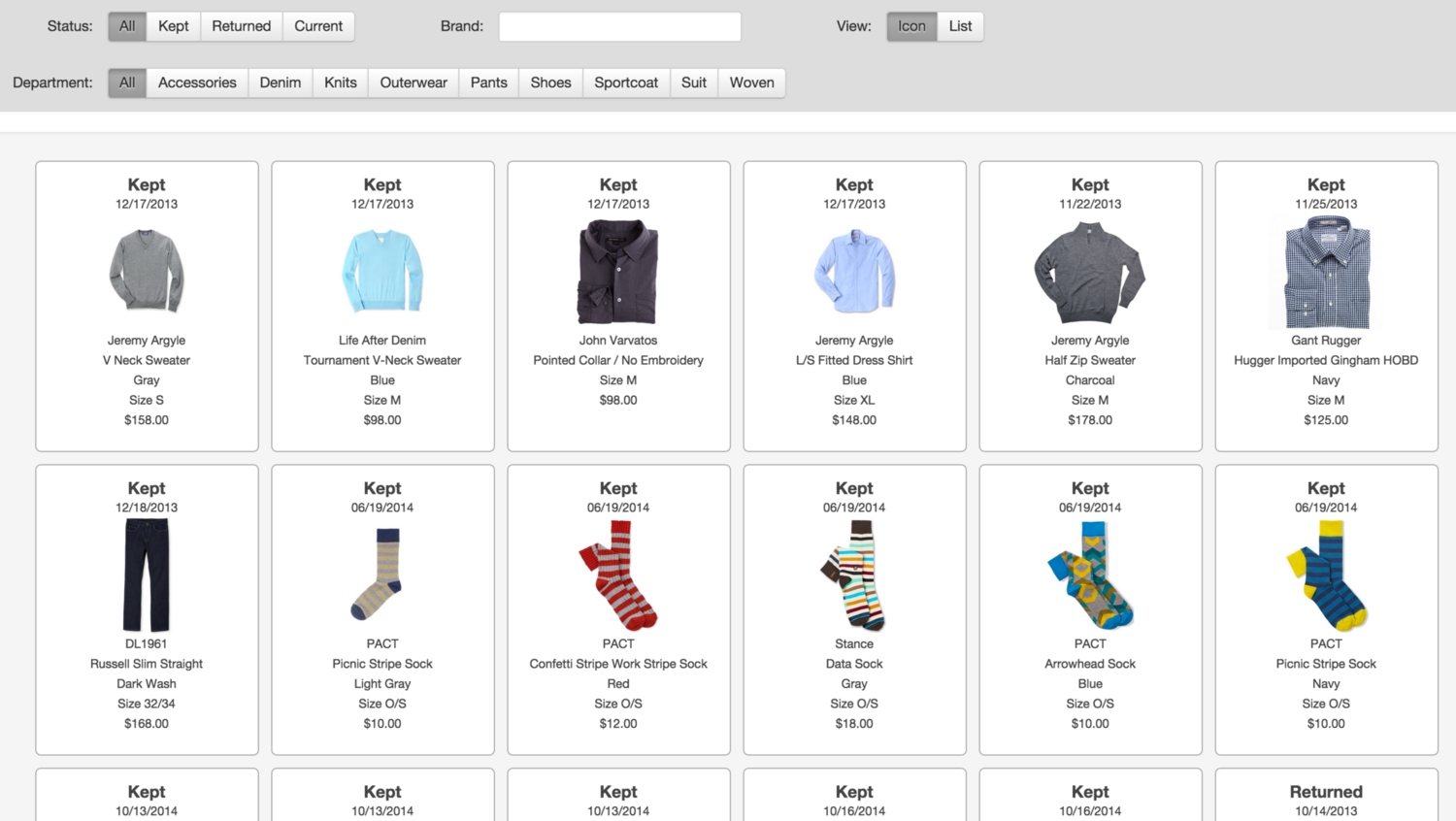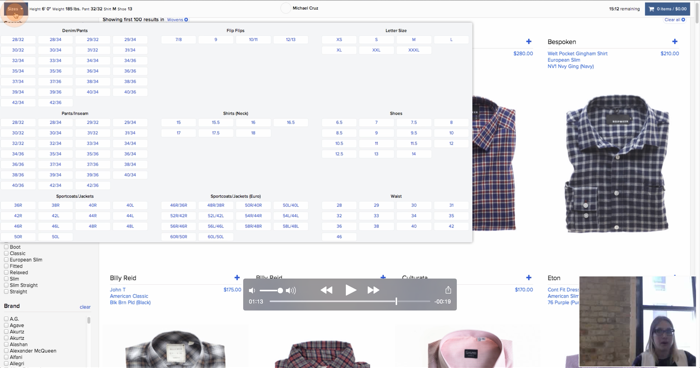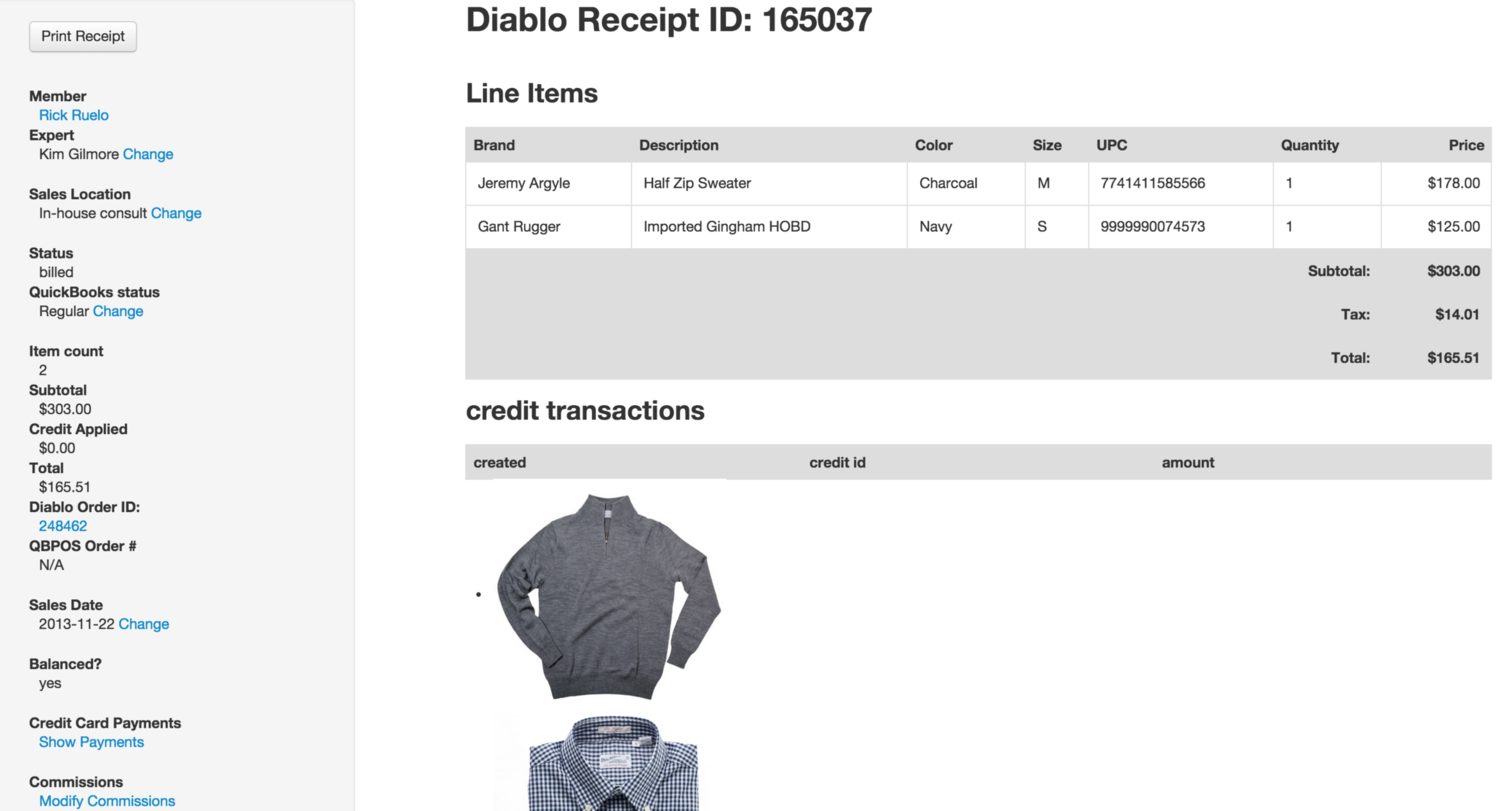Trunk Club Stylist Shopping
Overview
Every Trunk Club stylist helps over 600+ members build their personalized wardrobe. Stylists cannot shop for their members within a typical E-commerce experience, because remembering each member’s requests, style preferences, wardrobe, lifestyle, sizes, etc. is impossible.
We designed an efficient internal shopping experience that contextually highlights a given member’s needs, shopping history, and style/size preferences.
My role
User Research
Product Design
Visual Design
Metrics
Increased item keep rate
Reduced time spent shopping per member
Reduced new stylist training time
Research
Before designing a solution, I needed to understand what was and was not working in a stylists' workflow. After shadowing stylists daily, I was able to uncover the top problems in their shopping experiences.
Stylists were using several apps and Post-it Note reminders to manage their book of business. Apps like Salesforce weren't enough, so the engineering team had hacked together these internal apps to supplement a broken shopping experience. The stylists needed a better flow to help them stay more organized, on task, and effective while shopping for their members.
Key Takeaways
Stylists needed to select clothes that would match both a member's fit and style preferences, so they would want to keep clothes to add to their wardrobe. We needed to create a shopping experience that would allow stylists to consume member information, in order to build a personalized trunk efficiently:
What does member own? [from Trunk Club, or from other places via feedback]
What does he like? What does he dislike? [style, brand, fit, price] - determined from kept and rejected clothing and stated preferences.
What does he need? [wish list, requests, unspoken desires].
Sketching
After synthesizing my research, my job was to think as far and wide as possible. This involves a lot of sketching and getting feedback from the team.
Userflows and Wireframes
Once I got a clearer concept of what the stylists gravitated towards, I started to tackle a user flow. This was a useful exercise, because it helped the team and me uncover any missing pieces in the flow.
I presented some low-fidelity wireframes to a few stylists and quickly learned that I had made some wrong assumptions. Stylists found it helpful to see member information, while shopping. However, I learned that shopping needed to be more prominent in the experience, over member information.
Mockups
Here’s the final outcome.
The side panel allowed stylists to reference member information, while focusing on shopping. Stylists were able to view items that members both liked and disliked. They could quickly reference and filter out disliked items to better inform their trunk curations.
Another huge win with the multi-panel experience was that stylists could easily visualize which items would make a great addition to an existing wardrobe. Also, it was easier to avoid choosing items that members would dislike by seeing a member's past dislikes and new items side-by-side.
Beyond creating a foundational E-commerce platform, that had an attached member panel, we knew there could be a ton of optimizations. We tested new features that had more contextual recommendations.
Working with the business intelligence team, we added size recommendations based on customer data. E.g. If a member is usually a size small, but brand x tends to run small, get a medium.
We also iterated and launched a panel that surfaced the original member request. This helped stylists to remember to get the items that their member wanted.
Another impactful experiment was to surface more contextual product recommendations. E.g. We would make recommendations based on members that had similar taste to each other. In turn, this increased keep rate.
Style Guide
Establishing a style guide played a crucial role in releasing this app in under 3 months. I created a UI kit, along with a CSS style guide for the developers.
User Testing
As soon as the high fidelity mockups were completed, I created InVision prototypes. However, we had to switch from InVision to rapid prototyping with HTML to test how stylists would realistically interact with dynamic content (e.g. adding items to the cart).













